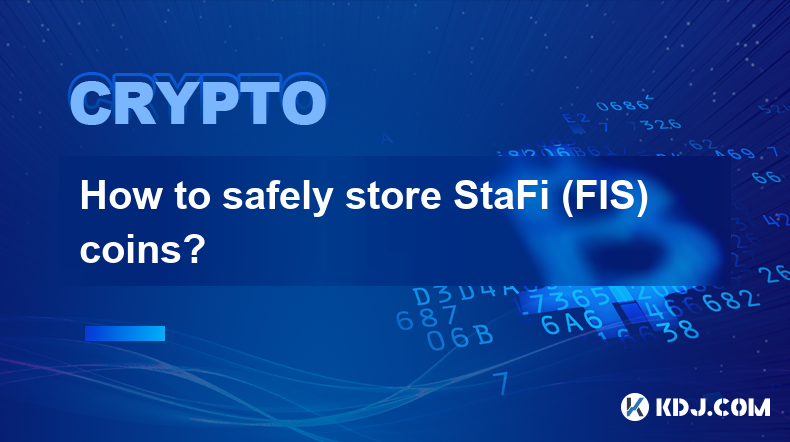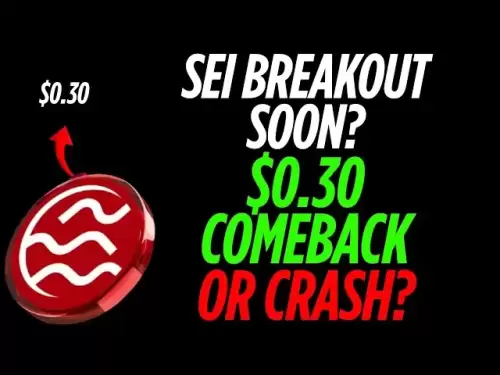-
 Bitcoin
Bitcoin $109,583.2239
0.19% -
 Ethereum
Ethereum $2,583.4612
0.48% -
 Tether USDt
Tether USDt $1.0003
-0.04% -
 XRP
XRP $2.2681
0.70% -
 BNB
BNB $659.9218
-0.52% -
 Solana
Solana $151.4961
-0.37% -
 USDC
USDC $0.9999
-0.02% -
 TRON
TRON $0.2861
1.20% -
 Dogecoin
Dogecoin $0.1718
0.04% -
 Cardano
Cardano $0.5960
-0.07% -
 Hyperliquid
Hyperliquid $40.1233
2.85% -
 Sui
Sui $2.9974
2.48% -
 Bitcoin Cash
Bitcoin Cash $497.1279
-1.76% -
 Chainlink
Chainlink $13.7275
-0.22% -
 UNUS SED LEO
UNUS SED LEO $9.0241
0.70% -
 Avalanche
Avalanche $18.5536
-0.88% -
 Stellar
Stellar $0.2421
1.39% -
 Toncoin
Toncoin $2.8593
-0.51% -
 Shiba Inu
Shiba Inu $0.0...01187
-0.07% -
 Litecoin
Litecoin $90.0023
2.90% -
 Hedera
Hedera $0.1590
2.79% -
 Monero
Monero $322.1495
0.00% -
 Polkadot
Polkadot $3.5453
-1.00% -
 Dai
Dai $1.0000
-0.01% -
 Bitget Token
Bitget Token $4.5733
-1.06% -
 Ethena USDe
Ethena USDe $1.0002
-0.01% -
 Uniswap
Uniswap $7.6345
3.03% -
 Aave
Aave $279.2583
0.47% -
 Pepe
Pepe $0.0...01003
-1.52% -
 Pi
Pi $0.4941
-0.32%
How to safely store StaFi (FIS) coins?
StaFi (FIS) coins can be securely stored using hardware wallets for maximum offline protection, software wallets for convenience, or custodial services for managed storage with additional features, requiring careful consideration of security, accessibility, and potential fees.
Jan 07, 2025 at 08:38 pm

Exploring Safe Staking and Storage Options for StaFi (FIS) Coins
Key Points:
- StaFi is a decentralized finance (DeFi) platform that allows users to stake their digital assets to earn rewards.
- FIS is the native cryptocurrency of the StaFi platform.
- There are several methods to store FIS coins securely, including hardware wallets, software wallets, and custodial services.
- It is crucial to consider security features, convenience, and fees when choosing a storage method.
- Researching and understanding the risks associated with each method is essential before making a decision.
Safe Storage Methods for StaFi (FIS) Coins:
1. Hardware Wallets
- Description: Hardware wallets are physical devices designed to store digital assets offline, providing maximum security. They generate private keys and store them within a tamper-proof hardware security module (HSM).
Benefits:
- Offline storage eliminates online vulnerabilities and hacking risks.
- Hardware wallets provide strong encryption and backup mechanisms.
- They are generally user-friendly and easy to set up.
Considerations:
- Hardware wallets offer the highest level of security but can be more expensive than other storage methods.
- Losing the device or seed phrase can result in permanent loss of funds.
Recommended Hardware Wallets for FIS:
- Ledger Nano X
- Trezor Model T
2. Software Wallets
- Description: Software wallets are digital applications that store private keys on a computer or mobile device. They offer convenience and accessibility while compromising security compared to hardware wallets.
Benefits:
- Software wallets are readily available and generally free to use.
- They provide easy access to tokens for trading and staking activities.
- Some wallets offer additional features such as DApp integration and multi-factor authentication.
Considerations:
- Software wallets are susceptible to malware, phishing attacks, and other online threats.
- If the device is compromised, the private keys stored in the wallet may be compromised as well.
Recommended Software Wallets for FIS:
- Trust Wallet
- MetaMask
- Coinbase Wallet
3. Custodial Services
- Description: Custodial services are third-party providers that hold and manage digital assets on behalf of users. They provide convenient and often regulated platforms for storing and managing FIS tokens.
Benefits:
- Custodial services offer peace of mind as they safeguard assets with robust security measures.
- They provide access to staking services and other advanced financial features.
- Users can access their accounts remotely without managing their private keys.
Considerations:
- Custodial services have centralized access to assets, which may pose trust and security concerns.
- They may charge fees for storage and additional services.
Recommended Custodial Services for FIS:
- StaFi Hub
- Binance
Additional Steps to Enhance Security:
- Enable Two-Factor Authentication (2FA): Add an extra layer of security by requiring a code from a text message or authenticator app when logging into storage platforms.
- Use a Strong Password: Choose a complex password with a mix of uppercase, lowercase, numbers, and symbols. Avoid using common words or phrases.
- Backup Seed Phrase: For hardware wallets, store the seed phrase in multiple secure locations. If your device is lost or stolen, the seed phrase will allow you to recover your assets.
FAQs:
Q: What is the safest way to store FIS coins?
A: The safest way to store FIS coins is to use a hardware wallet, such as the Ledger Nano X or Trezor Model T. Hardware wallets provide offline storage and advanced security features.
Q: Can I store FIS coins on a software wallet?
A: Yes, you can store FIS coins on software wallets such as Trust Wallet or MetaMask. However, software wallets are less secure than hardware wallets and require additional precautions.
Q: What are the fees associated with using custodial services?
A: Custodial services may charge storage fees and additional service fees. It is important to review the fees structure before choosing a provider.
Q: How can I stake my FIS coins securely?
A: You can safely stake your FIS coins by using the StaFi Hub custodial service or by delegating your tokens to validators through a software wallet. Ensure you research the validator's reputation and reliability before delegating.
Disclaimer:info@kdj.com
The information provided is not trading advice. kdj.com does not assume any responsibility for any investments made based on the information provided in this article. Cryptocurrencies are highly volatile and it is highly recommended that you invest with caution after thorough research!
If you believe that the content used on this website infringes your copyright, please contact us immediately (info@kdj.com) and we will delete it promptly.
- Crypto's Wild Ride: TOKEN6900, SPX6900, and the S&P 500 Connection
- 2025-07-04 03:50:13
- LUNA Crypto Collapse: From Billions Lost to a Quiet Comeback?
- 2025-07-04 02:35:18
- Briber's Four Forces: Decoding the Dynamics of Crypto Incentives
- 2025-07-04 02:35:18
- Solana DeFi Accumulation: Riding the Wave or Just HODLing On?
- 2025-07-04 02:40:12
- ZKasino's $30M Rug Pull: Founder Arrested in UAE – Justice Served?
- 2025-07-04 00:30:13
- Bitcoin's Bull Run: Standard Chartered and the ETF Inflow Effect
- 2025-07-04 00:30:13
Related knowledge

How to customize USDT TRC20 mining fees? Flexible adjustment tutorial
Jun 13,2025 at 01:42am
Understanding USDT TRC20 Mining FeesMining fees on the TRON (TRC20) network are essential for processing transactions. Unlike Bitcoin or Ethereum, where miners directly validate transactions, TRON uses a delegated proof-of-stake (DPoS) mechanism. However, users still need to pay bandwidth and energy fees, which are collectively referred to as 'mining fe...

USDT TRC20 transaction is stuck? Solution summary
Jun 14,2025 at 11:15pm
Understanding USDT TRC20 TransactionsWhen users mention that a USDT TRC20 transaction is stuck, they typically refer to a situation where the transfer of Tether (USDT) on the TRON blockchain has not been confirmed for an extended period. This issue may arise due to various reasons such as network congestion, insufficient transaction fees, or wallet-rela...

How to cancel USDT TRC20 unconfirmed transactions? Operation guide
Jun 13,2025 at 11:01pm
Understanding USDT TRC20 Unconfirmed TransactionsWhen dealing with USDT TRC20 transactions, it’s crucial to understand what an unconfirmed transaction means. An unconfirmed transaction is one that has been broadcasted to the blockchain network but hasn’t yet been included in a block. This typically occurs due to low transaction fees or network congestio...

How to check USDT TRC20 balance? Introduction to multiple query methods
Jun 21,2025 at 02:42am
Understanding USDT TRC20 and Its ImportanceUSDT (Tether) is one of the most widely used stablecoins in the cryptocurrency market. It exists on multiple blockchain networks, including TRC20, which operates on the Tron (TRX) network. Checking your USDT TRC20 balance accurately is crucial for users who hold or transact with this asset. Whether you're sendi...

What to do if USDT TRC20 transfers are congested? Speed up trading skills
Jun 13,2025 at 09:56am
Understanding USDT TRC20 Transfer CongestionWhen transferring USDT TRC20, users may occasionally experience delays or congestion. This typically occurs due to network overload on the TRON blockchain, which hosts the TRC20 version of Tether. Unlike the ERC20 variant (which runs on Ethereum), TRC20 transactions are generally faster and cheaper, but during...

The relationship between USDT TRC20 and TRON chain: technical background analysis
Jun 12,2025 at 01:28pm
What is USDT TRC20?USDT TRC20 refers to the Tether (USDT) token issued on the TRON blockchain using the TRC-20 standard. Unlike the more commonly known ERC-20 version of USDT (which runs on Ethereum), the TRC-20 variant leverages the TRON network's infrastructure for faster and cheaper transactions. The emergence of this version came as part of Tether’s...

How to customize USDT TRC20 mining fees? Flexible adjustment tutorial
Jun 13,2025 at 01:42am
Understanding USDT TRC20 Mining FeesMining fees on the TRON (TRC20) network are essential for processing transactions. Unlike Bitcoin or Ethereum, where miners directly validate transactions, TRON uses a delegated proof-of-stake (DPoS) mechanism. However, users still need to pay bandwidth and energy fees, which are collectively referred to as 'mining fe...

USDT TRC20 transaction is stuck? Solution summary
Jun 14,2025 at 11:15pm
Understanding USDT TRC20 TransactionsWhen users mention that a USDT TRC20 transaction is stuck, they typically refer to a situation where the transfer of Tether (USDT) on the TRON blockchain has not been confirmed for an extended period. This issue may arise due to various reasons such as network congestion, insufficient transaction fees, or wallet-rela...

How to cancel USDT TRC20 unconfirmed transactions? Operation guide
Jun 13,2025 at 11:01pm
Understanding USDT TRC20 Unconfirmed TransactionsWhen dealing with USDT TRC20 transactions, it’s crucial to understand what an unconfirmed transaction means. An unconfirmed transaction is one that has been broadcasted to the blockchain network but hasn’t yet been included in a block. This typically occurs due to low transaction fees or network congestio...

How to check USDT TRC20 balance? Introduction to multiple query methods
Jun 21,2025 at 02:42am
Understanding USDT TRC20 and Its ImportanceUSDT (Tether) is one of the most widely used stablecoins in the cryptocurrency market. It exists on multiple blockchain networks, including TRC20, which operates on the Tron (TRX) network. Checking your USDT TRC20 balance accurately is crucial for users who hold or transact with this asset. Whether you're sendi...

What to do if USDT TRC20 transfers are congested? Speed up trading skills
Jun 13,2025 at 09:56am
Understanding USDT TRC20 Transfer CongestionWhen transferring USDT TRC20, users may occasionally experience delays or congestion. This typically occurs due to network overload on the TRON blockchain, which hosts the TRC20 version of Tether. Unlike the ERC20 variant (which runs on Ethereum), TRC20 transactions are generally faster and cheaper, but during...

The relationship between USDT TRC20 and TRON chain: technical background analysis
Jun 12,2025 at 01:28pm
What is USDT TRC20?USDT TRC20 refers to the Tether (USDT) token issued on the TRON blockchain using the TRC-20 standard. Unlike the more commonly known ERC-20 version of USDT (which runs on Ethereum), the TRC-20 variant leverages the TRON network's infrastructure for faster and cheaper transactions. The emergence of this version came as part of Tether’s...
See all articles

























































































